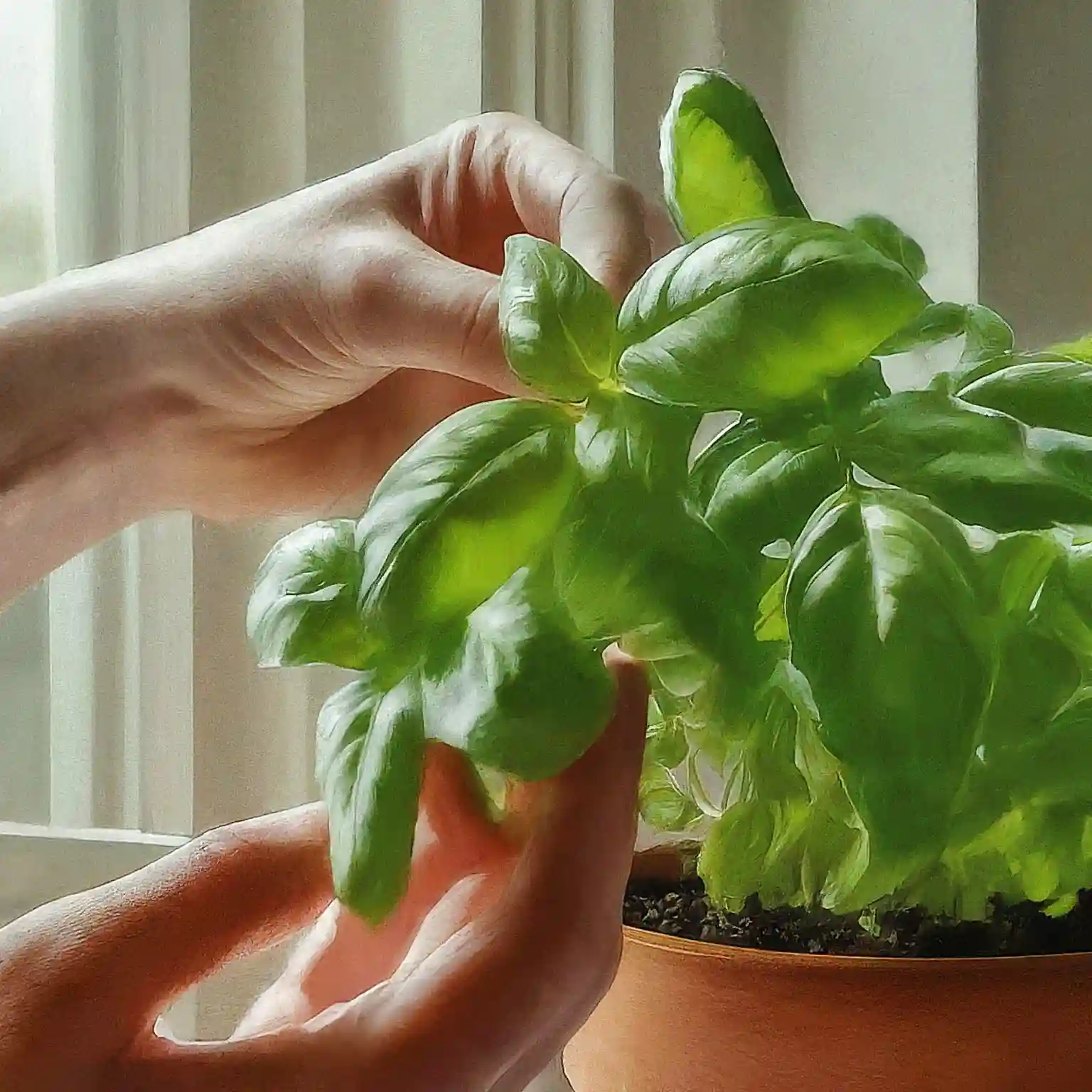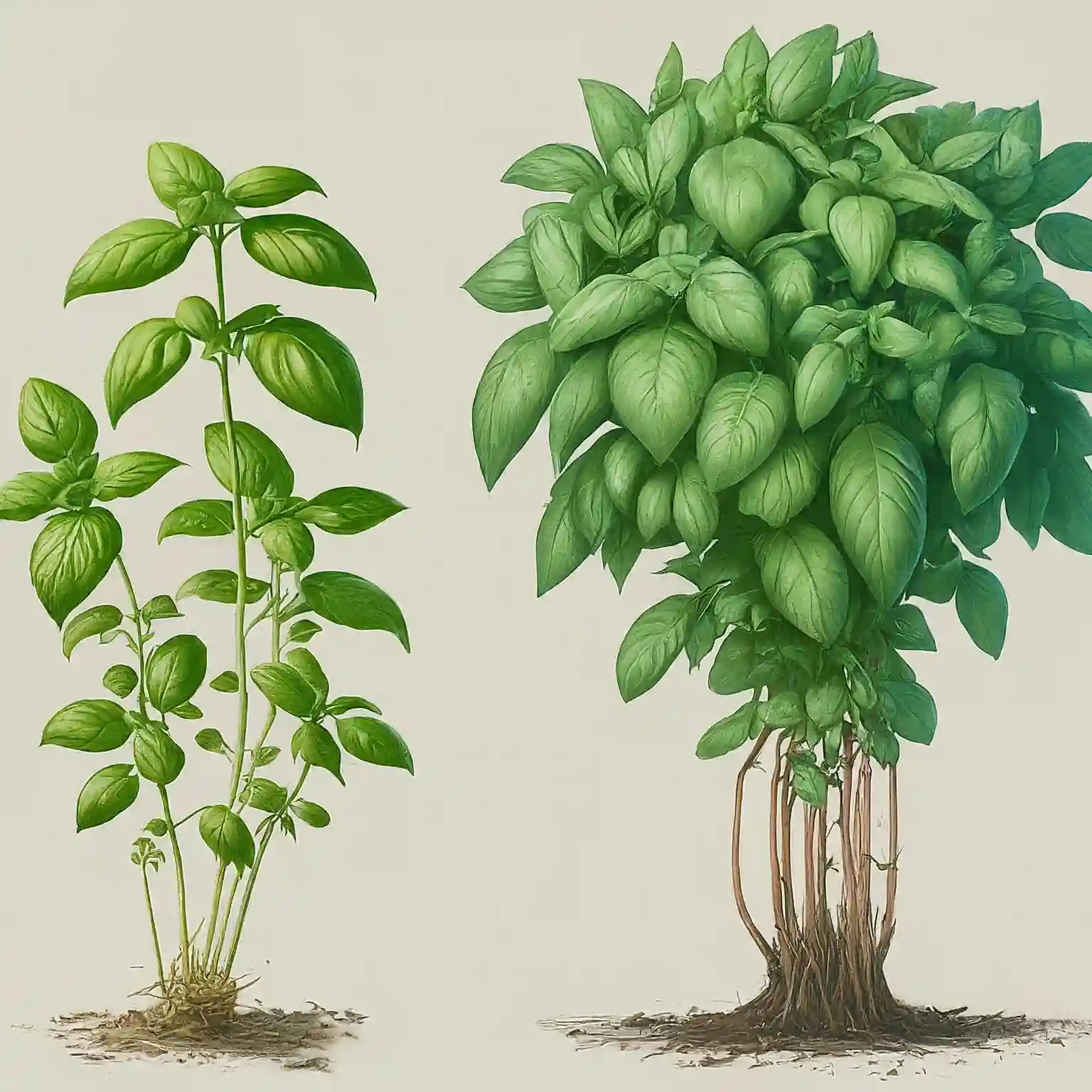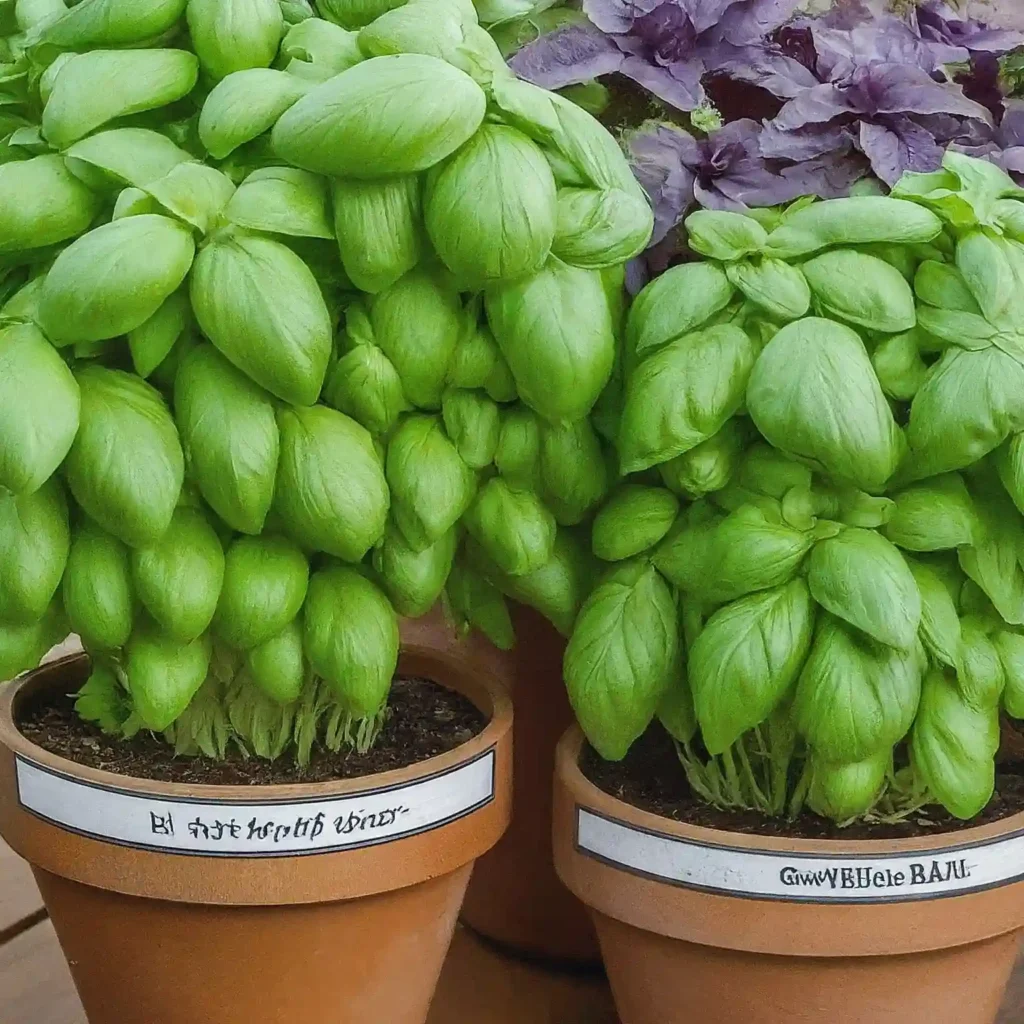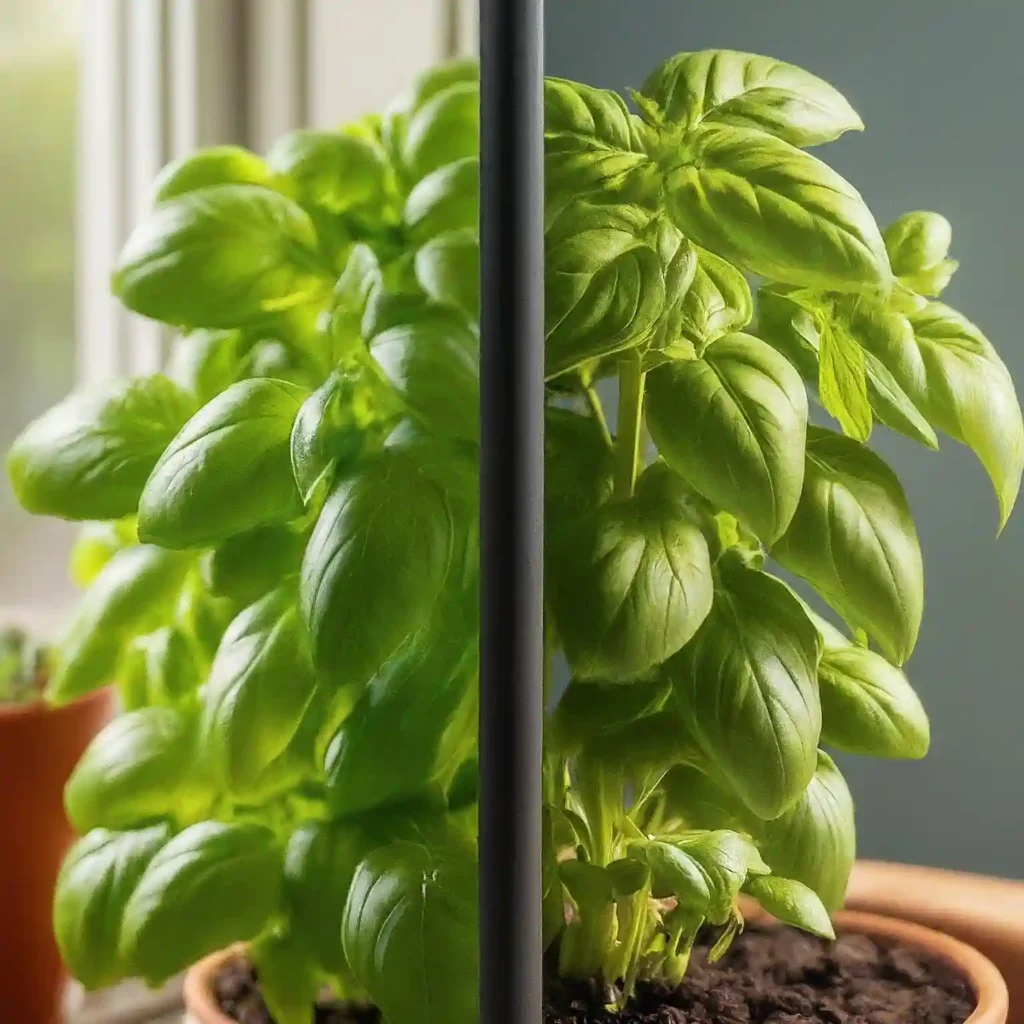
How to Keep Basil Plant Compact
Basil, with its delightful aroma and culinary versatility, is a favorite herb among gardeners and cooks alike. However, to ensure a bountiful harvest of fresh basil leaves, it’s crucial to keep the plant compact and bushy. In this guide, we’ll explore effective techniques and tips for maintaining the compactness of your basil plant, whether it’s grown indoors or outdoors.
Understanding Basil Growth Patterns

Basil plants have distinct growth patterns that can influence their overall compactness. When left unchecked, basil plants tend to become leggy, with long stems and sparse foliage. This not only diminishes the plant’s aesthetic appeal but also reduces its productivity. To counteract legginess and promote compact growth, regular pruning is essential.
Pruning helps stimulate lateral growth, resulting in a bushier basil plant. By removing the terminal buds and excessive foliage, you encourage the plant to focus its energy on producing more compact and flavorful leaves. Additionally, pruning can prevent basil from flowering prematurely, prolonging its harvestable lifespan.
Pruning Techniques for Compact Growth
Pruning Basil for Compact Growth

Pruning basil is a straightforward yet effective method for maintaining compact growth. Begin by identifying the terminal buds, which are located at the top of each stem. Using sharp, clean scissors or pruning shears, carefully snip off these buds, ensuring to leave a small portion of the stem intact. This encourages the basil plant to branch out and produce new growth from the remaining nodes.
How to Prune Basil to Prevent Legginess
To prevent legginess, focus on removing the upper portions of the stems where the growth is most vigorous. Trim the stems just above a pair of healthy leaves, making a clean cut at a slight angle. This technique redirects the plant’s energy towards lateral growth, resulting in a denser and more compact basil plant.
Pinching Back Basil for Compact Growth
Pinching back basil involves manually removing the tips of the stems between your thumb and forefinger. This method is particularly effective for young basil plants, as it encourages branching and compact growth. Simply pinch off the top inch or so of each stem, taking care not to damage the surrounding foliage. Repeat this process regularly to maintain the plant’s compactness throughout the growing season.
Frequency of Pruning for Compact Basil
The frequency of pruning depends on the growth rate of your basil plant and your desired level of compactness. As a general rule, aim to prune your basil plant once every 1-2 weeks during the growing season. Monitor the plant regularly for signs of vigorous growth or legginess, and prune accordingly to maintain its compact shape.
Choosing the Right Basil Varieties

Not all basil varieties are created equal when it comes to compactness. Some varieties naturally exhibit more bushy and compact growth habits, making them ideal choices for small gardens or container cultivation. When selecting basil seeds or seedlings, consider opting for compact varieties such as ‘Spicy Globe’ or ‘Greek Columnar.’ These varieties are well-suited for compact growth and can thrive in confined spaces.
Best Basil Varieties for Compact Growth
- Spicy Globe Basil: This compact variety forms tight mounds of foliage, making it perfect for container gardening.
- Greek Columnar Basil: With its upright growth habit, this basil variety takes up minimal space while still producing ample foliage for culinary use.
Compact Basil Varieties for Small Spaces
If you’re short on gardening space, compact basil varieties are your best bet. These varieties are specifically bred for their ability to thrive in confined areas, making them ideal for balcony gardens, windowsills, or small raised beds.
Optimizing Growing Conditions
Creating an optimal growing environment is essential for maintaining the compactness of your basil plant. Whether you’re growing basil indoors or outdoors, paying attention to factors such as light, water, and temperature can make a significant difference in the plant’s growth and development.

Growing Basil Indoors for Compactness
Indoor basil plants require adequate light to thrive, so be sure to place them in a sunny window or provide supplemental lighting if needed. Keep the soil consistently moist but not waterlogged, and avoid over-fertilizing, as this can lead to excessive growth.
Maintaining Compact Basil in Various Seasons
Adjusting your care routine according to the changing seasons can help ensure the continued compactness of your basil plant. During the warmer months, provide ample sunlight and regular watering, while in winter, protect the plant from cold drafts and reduce watering frequency to prevent root rot.
Keeping Store-Bought Basil Compact
If you’ve purchased basil from a nursery or grocery store, it’s essential to take steps to maintain its compactness once you bring it home. Repot the basil plant into a slightly larger container with well-draining soil, and place it in a location with plenty of sunlight. Regularly pinch back the stems to encourage bushy growth, and avoid overwatering to prevent root rot.
Preventing Flowering in Basil
Basil tends to bolt or produce flowers, as it reaches maturity. While flowering is a natural part of the plant’s life cycle, it can signal the end of leaf production and result in a decline in flavor. To prevent basil from flowering prematurely and maintain its compactness, proactive measures can be taken.

Pruning Basil to Prevent Flowering
Regular pruning is one of the most effective ways to prevent basil from flowering. By removing the terminal buds and flower spikes as soon as they begin to emerge, you signal to the plant that it should focus its energy on foliage production rather than reproductive growth. This not only prolongs the harvestable lifespan of the plant but also encourages a more compact and bushy growth habit.
Impact of Flowering on Basil Compactness
When basil begins to flower, it shifts its energy away from producing leaves and towards seed production. As a result, the plant may become leggy and sparse, with fewer leaves available for culinary use. By preventing flowering through timely pruning and maintenance, you can preserve the compactness and productivity of your basil plant for longer.
FAQs About Keeping Basil Plants Compact
How to Keep Basil Plant Compact in a Pot
Growing basil in containers offers many advantages, including the ability to control its growth and environment more easily. To keep basil plants compact in pots, choose a container that provides adequate drainage and space for root development. Additionally, ensure the plant receives sufficient sunlight and regular pruning to maintain its shape and size.
Tips for Outdoor Basil Plant Care
Outdoor basil plants require attention to ensure they remain compact and healthy throughout the growing season. Provide ample sunlight, and water consistently, and monitor for signs of pests or disease. Pruning back any overgrowth and pinching off flower buds can also help maintain the plant’s compactness and encourage bushy growth.
Ensuring Compactness in Store-Bought Basil
When purchasing basil plants from a nursery or grocery store, it’s essential to take steps to ensure their continued compactness and vitality. Repot the basil into a larger container with well-draining soil, and place it in a location with plenty of sunlight. Regularly prune back any leggy growth and avoid overwatering to prevent root rot.
Conclusion
Maintaining the compactness of your basil plant is key to ensuring a continuous supply of fresh and flavorful leaves for culinary use. By understanding basil growth patterns, employing effective pruning techniques, choosing the right varieties, and optimizing growing conditions, you can cultivate a healthy and productive basil plant that enhances your cooking and garden space.
Remember to regularly prune your basil plant to prevent legginess and encourage bushy growth. Choose compact basil varieties suited to your space constraints, whether you’re growing indoors or outdoors. Provide optimal growing conditions, including adequate sunlight, water, and temperature, to support the plant’s compactness and overall health.
As you embark on your journey to keep your basil plants compact and thriving, don’t hesitate to refer back to this guide for guidance and inspiration. With proper care and attention, your basil plant will reward you with a bounty of aromatic leaves, perfect for adding a fresh burst of flavor to your favorite dishes.
Explore more basil-related topics:
- 7 Ways of Using Basil as Mosquito Repellent
- 10 Best Ways How to Care for Basil Plant Indoors
- Ultimate Guide: When to Harvest Basil from Plant
- Is Tulsi and Basil Same? 5 Key Differences
- 7 Secrets: How to Keep Basil Plant Alive
- What to Do with Basil Plant After Flowering
- Can You Grow Basil Plant from Cuttings?
- Basil Plant Care: Yellow Leaves – 5 Fixes for Yellowing Leaves in 7 Days
- Can You Overwater Basil Plants? 5 Signs & Tips
With the knowledge and tips shared in this guide, you’re well-equipped to keep your basil plant compact, healthy, and vibrant throughout its growth cycle. Happy gardening and happy cooking!